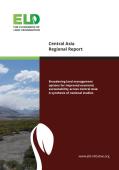This paper reviews different approaches to making the economic case for improved management of natural capital in national planning and provides recommendations for governments to undertake economic analyses of the environment and natural resources management for planning purposes.
In many low-income countries, natural resources sectors (agriculture, mining, forestry, fishery, nature-based tourism) are identified as the engines of economic growth. However, a majority of the ecosystems on which human well-being depends are being degraded. The difficulties of providing economic and policy-relevant information about sustainable economic management of natural capital are often seen as a key reason for inadequate integration of the environment in macroeconomic and sector polices. The report concludes that the analysed country studies (Lao PDR, Mozambique, Peru, Tajikistan, and Uganda) mainly relied on existing domestic or international analytical work, used relatively basic calculations/data (e.g. the market value of fisheries, the value of timber sold), and often formed part of a broader analytical effort.
Examples of findings in the country reports include:
- In Lao PDR, non-timber forest products (NTFPs) such as food, fodder, building material, and medicine are estimated to comprise nearly half of rural household subsistence and cash income.
- In Mozambique, public revenues from natural resources could be increased by 165 percent.
- In Peru, the cost of environmental degradation was estimated to be equivalent to 3.9 percent of GDP.
- In Tajikistan, environmental degradation was identified as a binding constraint to economic growth, with national savings estimated to be -6.6 percent of GDP, largely due to soil erosion, water damage, and underinvestment in fixed capital.
- In Uganda, the economic value of fisheries, forestry, wetlands, tourism, and wildlife were estimated to be equivalent to 19 percent of GDP.
By involving policy makers in the preparation of country reports—and focusing on the linkages between environmental and natural resource issues and prioritised objectives such as economic growth, poverty reduction, and public health—opportunities to influence policy making have been enhanced.



